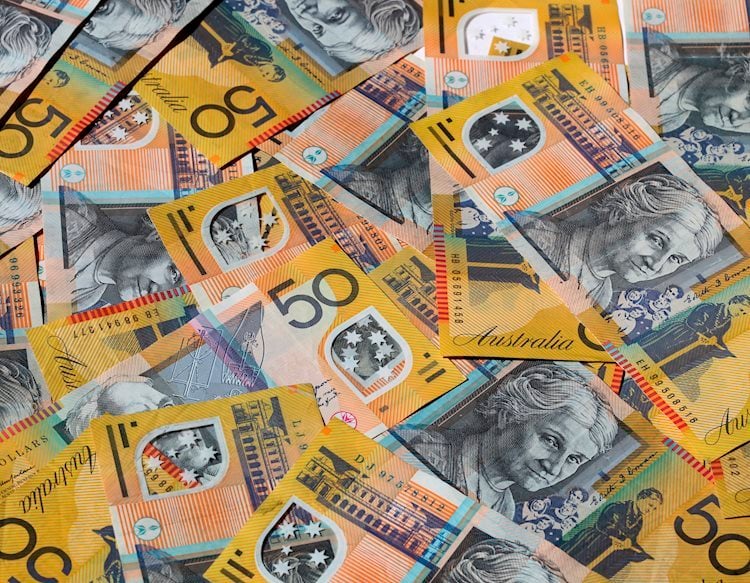- AUD/USD gains traction from risk-on sentiment and China’s stimulus measures.
- Hawkish RBA stance and soft US inflation maintain upside potential for AUD/USD.
- Markets are still betting on a 50 bps cut by the Fed.
The AUD/USD gained traction on Friday, climbing by 0.20% to 0.6910. Optimism surrounding China’s stimulus measures, including monetary easing by the People’s Bank of China (PBOC), provided support to the Australian Dollar, boosting risk appetite among investors. Personal Consumption Expenditures (PCE) figures from the US from August came in soft, also prompting USD weakness.
On one hand, the Reserve Bank of Australia (RBA) doesn’t plan on cutting rates while the Federal Reserve (Fed) has already started its easing cycle, which adds downward pressure to the pair.
Daily digest market movers: Australian Dollar rises PCE data weights on the USD.
- The Australian Dollar appreciated against the US Dollar (USD) due to positive economic news from China and soft economic data from the US.
- The People’s Bank of China (PBOC) implemented stimulus measures, including a rate cut and lower reserve requirement ratio, boosting risk sentiment and supporting the AUD.
- The RBA reiterated its hawkish stance, implying that the bank will maintain high interest rates until inflation returns to the target range, supporting the AUD.
- US inflation, as measured by the headline PCE Price Index, increased by 2.2% YoY in August, slightly below expectations and suggesting a modest inflationary environment.
- The core PCE Price Index, excluding food and energy, rose by 2.7%, in line with expectations and indicating a stable core inflation rate.
- Markets are betting on high odds of a 50 bps cut by the Fed in the November meeting and monetary policy divergence between the US central bank and the RBA, both supportive of the Aussie.
AUD/USD technical outlook: AUD/USD steady, hovering below 0.7000
The Relative Strength Index (RSI) and Moving Average Convergence Divergence (MACD) on the daily chart are strong, with the former above 50 pointing upward and the latter printing rising green bars.
With bullish momentum mounting, it all points to the pair being set for more upside. The next target is seen at 0.7000.
RBA FAQs
The Reserve Bank of Australia (RBA) sets interest rates and manages monetary policy for Australia. Decisions are made by a board of governors at 11 meetings a year and ad hoc emergency meetings as required. The RBA’s primary mandate is to maintain price stability, which means an inflation rate of 2-3%, but also “..to contribute to the stability of the currency, full employment, and the economic prosperity and welfare of the Australian people.” Its main tool for achieving this is by raising or lowering interest rates. Relatively high interest rates will strengthen the Australian Dollar (AUD) and vice versa. Other RBA tools include quantitative easing and tightening.
While inflation had always traditionally been thought of as a negative factor for currencies since it lowers the value of money in general, the opposite has actually been the case in modern times with the relaxation of cross-border capital controls. Moderately higher inflation now tends to lead central banks to put up their interest rates, which in turn has the effect of attracting more capital inflows from global investors seeking a lucrative place to keep their money. This increases demand for the local currency, which in the case of Australia is the Aussie Dollar.
Macroeconomic data gauges the health of an economy and can have an impact on the value of its currency. Investors prefer to invest their capital in economies that are safe and growing rather than precarious and shrinking. Greater capital inflows increase the aggregate demand and value of the domestic currency. Classic indicators, such as GDP, Manufacturing and Services PMIs, employment, and consumer sentiment surveys can influence AUD. A strong economy may encourage the Reserve Bank of Australia to put up interest rates, also supporting AUD.
Quantitative Easing (QE) is a tool used in extreme situations when lowering interest rates is not enough to restore the flow of credit in the economy. QE is the process by which the Reserve Bank of Australia (RBA) prints Australian Dollars (AUD) for the purpose of buying assets – usually government or corporate bonds – from financial institutions, thereby providing them with much-needed liquidity. QE usually results in a weaker AUD.
Quantitative tightening (QT) is the reverse of QE. It is undertaken after QE when an economic recovery is underway and inflation starts rising. Whilst in QE the Reserve Bank of Australia (RBA) purchases government and corporate bonds from financial institutions to provide them with liquidity, in QT the RBA stops buying more assets, and stops reinvesting the principal maturing on the bonds it already holds. It would be positive (or bullish) for the Australian Dollar.













